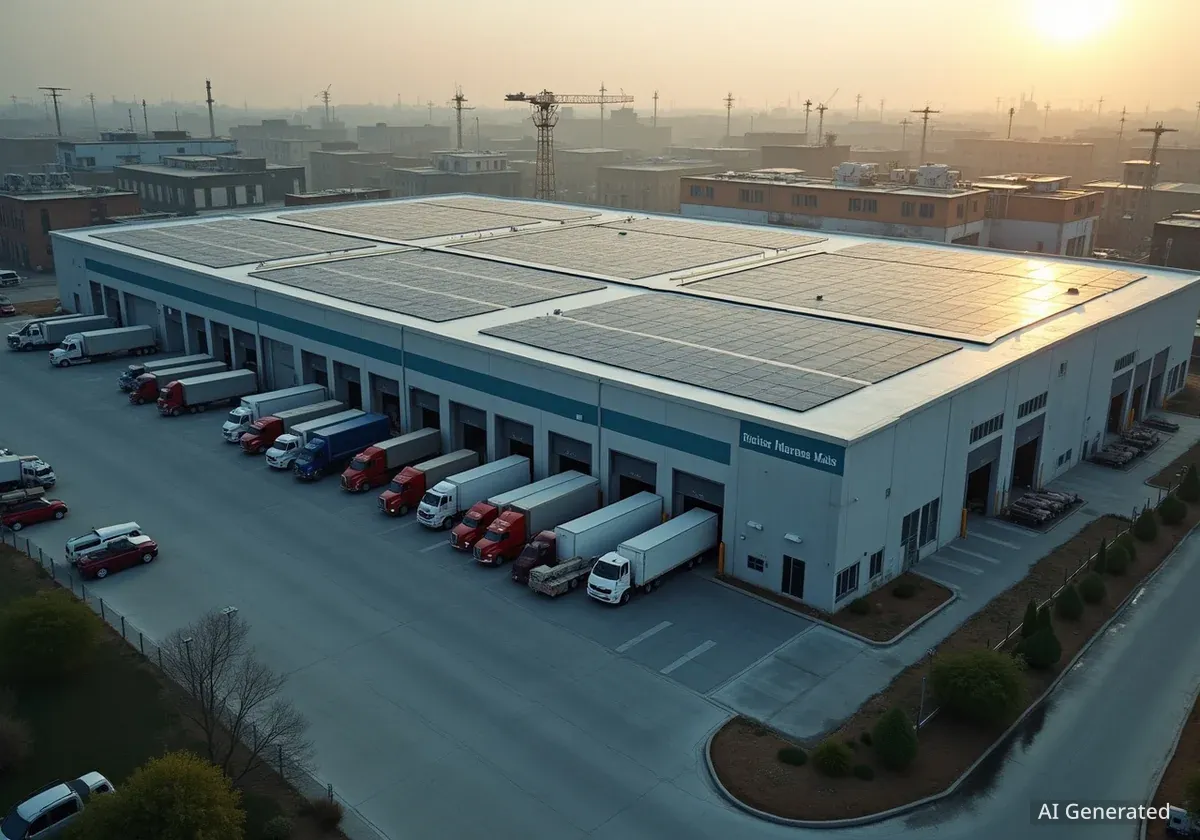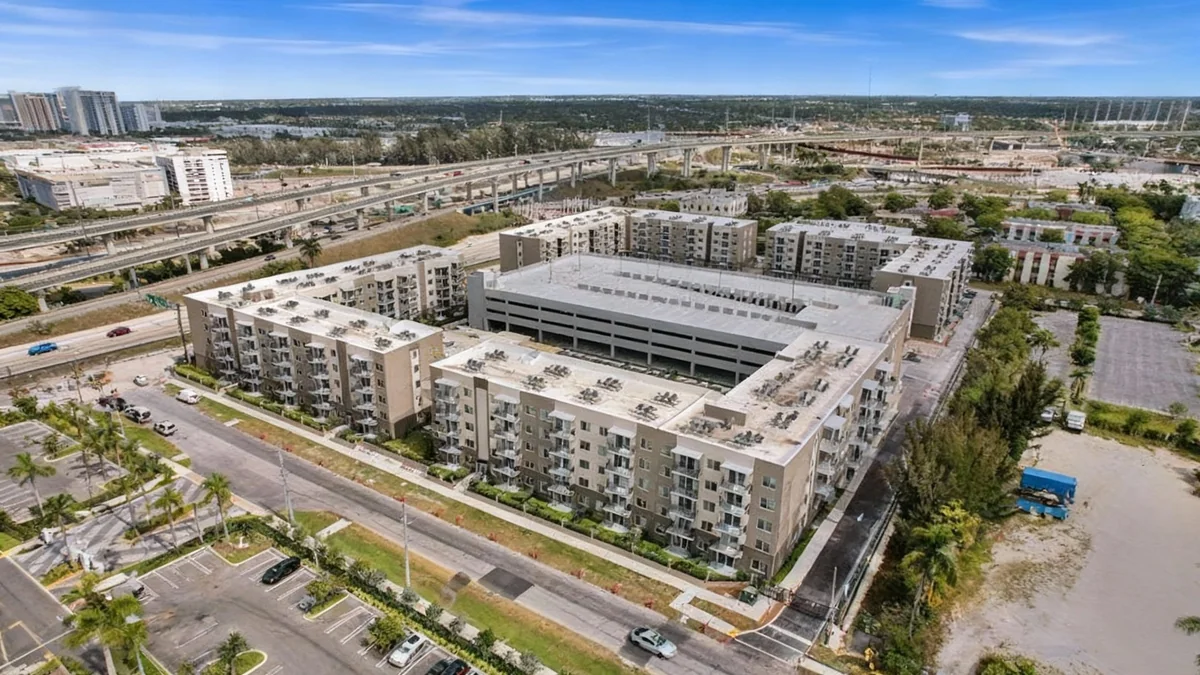Despite recent challenges like rising vacancy rates and slowing absorption, some industrial real estate developers in the United States see significant opportunities. They aim to replace the country's aging warehouse infrastructure with modern, automated facilities. This shift is driven by evolving tenant needs, technological advancements, and the potential impact of reshoring manufacturing.
Key Takeaways
- US industrial vacancy rates have nearly doubled since the post-pandemic period.
- Less than 15% of US industrial inventory was built after 2015.
- Tenant demand for modern, automated spaces is increasing.
- Reshoring manufacturing could significantly boost industrial real estate.
- AI is making land with power access more valuable for new developments.
Aging Infrastructure Creates Demand for New Warehouses
The United States industrial real estate market faces a paradox. Recent headlines highlight challenges, including an increase in new supply, slower absorption rates, and pressure on rent growth. However, industry leaders view these conditions as a chance to modernize the country's industrial stock. A significant portion of current warehouses is outdated.
According to Aasif Bade, Founder and CEO of Ambrose, a prominent industrial real estate developer, the need for modern facilities is clear. "The technological needs of our tenants continue to evolve, and those buildings will continue to evolve," Bade stated. He believes there is substantial room for growth over the next decade and beyond.
Industrial Inventory Snapshot
- Less than 15% of US industrial inventory has been built since 2015.
- Less than one-third of the inventory has been constructed since 2000.
- The total US industrial market spans nearly 18 billion square feet.
Market Adjustments and Future Growth Potential
The industrial leasing market has experienced difficulties over the past two years. Rising interest rates and global trade policy uncertainties have made companies more cautious. Industrial vacancy rates have steadily climbed from low single digits after the pandemic to nearly double in recent quarters. This raises questions among stakeholders about whether this is a normal market correction or a larger problem.
Despite these figures, Bade remains optimistic. He sees the market as "half full." He emphasizes that only a small fraction of the total industrial space is modern. This creates a large opportunity for new, high-tech developments. Current absorption rates are projected to be around 120 million square feet in 2025, a decrease from nearly 500 million square feet during the post-pandemic boom.
"One key factor that has made us highly convicted on modern industrial is that a very small fraction of that space has been built in the last 10 years," said Aasif Bade.
Meeting Evolving Tenant Needs
Modern industrial facilities require significantly different specifications than older buildings. Ceiling heights in new warehouses have doubled compared to those built decades ago. The power requirements have increased tenfold in some cases. Even the flatness of floors is now measured with millimeter precision to accommodate advanced robotics.
These specific demands mean that older buildings often cannot support the operations of today's businesses. Companies need spaces that can integrate automation and artificial intelligence effectively. This gap between existing infrastructure and modern needs drives the demand for new construction.
Impact of Automation and AI on Industrial Space
The increasing use of automation within warehouses is a key driver for modern industrial space demand. Automation allows for greater efficiency, faster processing, and reduced labor costs. As technology advances, the physical requirements of warehouses also change.
Artificial intelligence (AI) is further transforming warehouse operations. AI influences everything from robotic movements to inventory management. Bade noted the significant changes he has observed:
"What I see inside of a warehouse today versus 35 years ago when I walked into the warehouse where my dad worked is absolutely unbelievable. AI is completely changing even how the robotics and automation work."
This technological evolution means that industrial buildings must be designed with future capabilities in mind. Power accessibility has become a crucial factor. Land plots that can support high power demands are now much more valuable. This trend impacts not only warehouses but also data centers, which compete for similar land resources.
Reshoring and Supply Chain Shifts
The reshoring and onshoring of manufacturing to the United States represent a significant long-term trend. These projects are large-scale investments, requiring substantial land and capital. A new manufacturing facility creates a multiplier effect across the entire supply chain. This includes demand for industrial space for raw materials, production, and the distribution of finished goods.
This shift could profoundly impact the industrial market over the next five to ten years. It would create new demand that existing, older facilities cannot meet. The need for custom-built, modern spaces would increase substantially.
The Future of Industrial Development
While some submarkets may experience downward pressure on rents due to overbuilding, other supply-constrained areas continue to see rent growth. Ambrose, for example, is tracking nearly 50 tenant requirements totaling about 9 million square feet. This suggests a healthy underlying demand for industrial space.
The industrial sector is in a period of transition. Developers, investors, and lenders must look beyond short-term market fluctuations. The long-term opportunity lies in modernizing assets to meet future demands. This includes adapting to new technologies like AI and automation, as well as responding to broader economic shifts like reshoring.
The competition for land with robust power infrastructure will likely intensify. This could lead to industrial land being repurposed for data centers, further affecting availability for new warehouse construction. The industry must adapt to these changing dynamics to capitalize on the opportunities ahead.





